Building permaculture beds #2
I have just come indoors from gazing at my first permaculture bed in the potager. It was getting dark and I had trouble picking out the features. So it was appropriate to amble back inside and show you the results of the day.
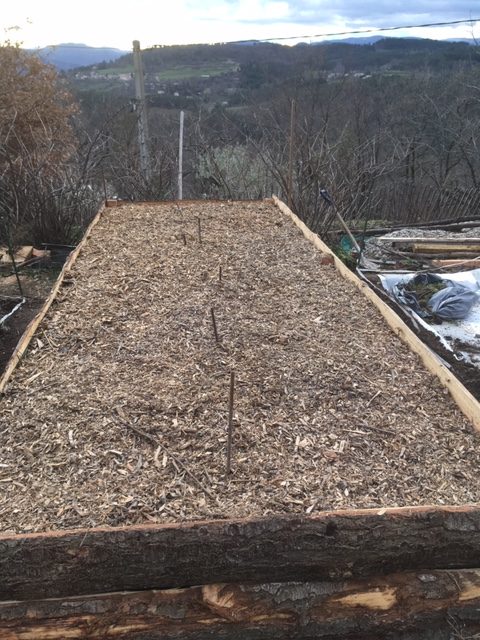
I’m surprised I haven’t taken out my sleeping bag and bedded down for the night. (Well, I would have stabbed myself with those metal markers where the dahlias are hiding, but details, details.)
It’s a perfect size for a snoozing spot. Three metres fifty long by one metre thirty wide. And high. Oh so high. Scarily high. Seventy centimetres.
And hopefully it will all be the most perfect environment for the fruit and flowers and veg.
After all, this is the plan. An expensive and time consuming and fraught plan.
If you break down the amount of work needed to make this beauty, it would be about 10 hours. Well, ten hours of labour from Nicolas. Six hours to get the wood from the sawmill, trundle over, build the bed, then four hours to fill the beast.
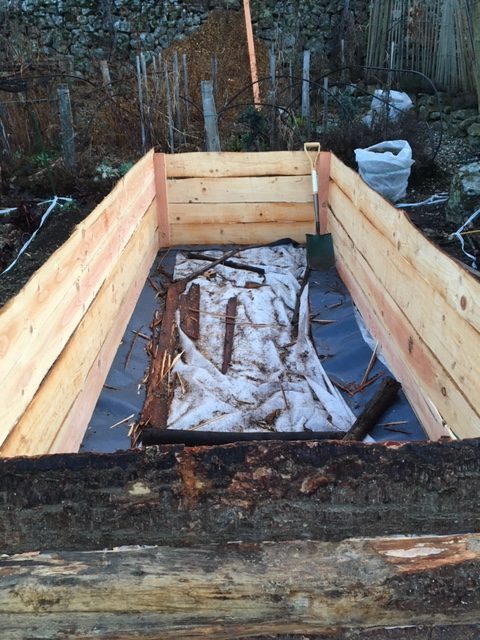
Our stonemason Simon works one day a week at the mobile sawmill in a neighbouring area, and has been putting aside the oddly long planks of wood.

You would then have to decide who is going to line the whole interior of the bed. This is Douglas pine. Cheap and attractive. But it will rot. So bring on the roll of that annoying weed proof fabric that can be fixed into place with a staple gun.

Factoring in my labour (thank goodness I’m cheap) would push it way over into the alarming vanity project for a few fruit and veg. So I would think hard before you commit. The simple ones I made in my other garden were an afternoon’s work with very little outlay.
- Remove the existing plants
- Remove the weeds
- Remove the good soil
- Landscape the area
- Level the area and measure up for the raised bed
- Collect logs and branches
- Collect composted branches
- Collect chippings for the mulch
- Collect horse manure
Looks pretty simple on a page. But oh, the mess. The space to stockpile, the endless shifting of soil and compost. The toil.
Still, I’m determined to do this, so here are the action shots of the day.
And if you are taking notes, here are the layers.
- Logs
- Branches
- Composted green material
- Composted leaves
- Unimproved soil
- Horse manure
- Chippings
- Improved soil
- Chippings
According to Nicolas – master permaculture creator – the ideal logs should be ‘water logs’. Ones that can absorb a lot of water quickly. willow, ash. But as I had half-rotting old chestnut poles from the dismantled pergola lying next to the bed. Plus lots and lots of rotting plant supports from the old potager structure, they went in instead.
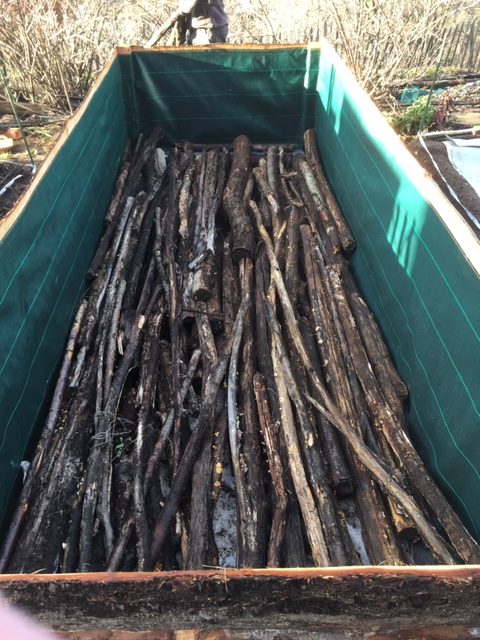
After all, let’s be realistic. I’m using the materials I have to hand. So when you live on a chestnut farm, that’s what you use.
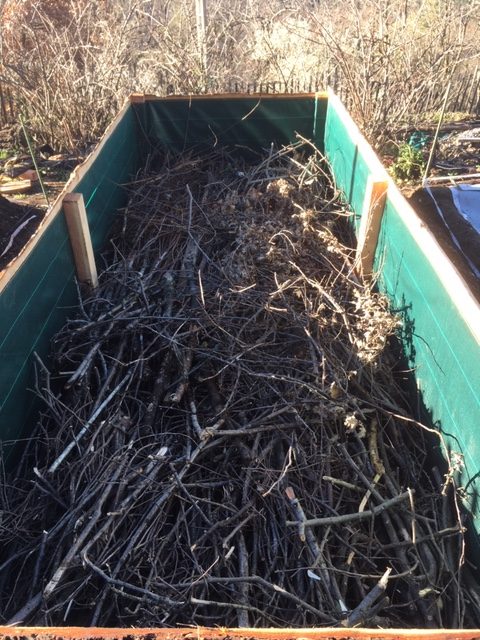
I was surprised that Nicolas added a layer of the chipping between the soils. And how much rotting plant material went in. I’m learning here. The whole bed of material will sink a bit over time. I will be adding more mulch every year.
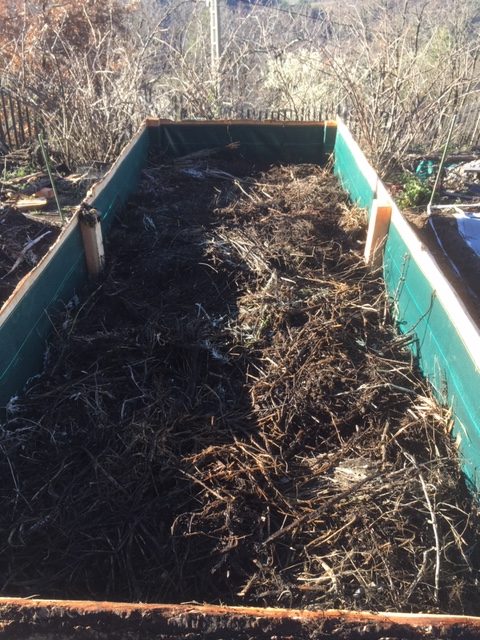
And to save some time, I put in five dahlias in their pots down the centre of the bed. It was a bit of a rushed job. I ought to have made time to actually decide the colour scheme of all my 35 dahlias and place them accordingly.
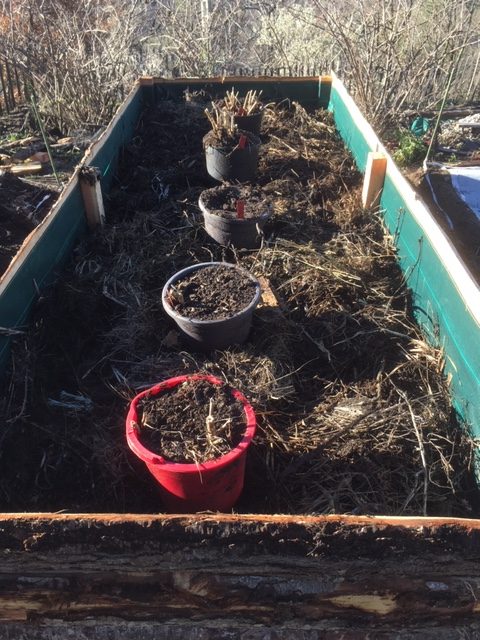
But I didn’t want to slow down the frantic filling of the bed. I can fuss with the pots another time.
Oh and note to self: make time to pull the self seeded rocket, coriander, lettuce and tomato seedlings that were growing out of the gorgeous rich stack of soil and pot them up before the big day. We were all grabbing at the little seedlings as the soil was dumped into the bed.
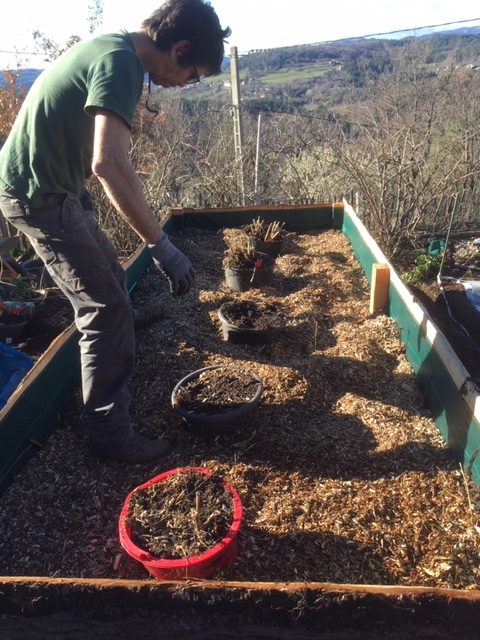
I had great trouble photographing this last shot. I kept seeing abandoned sacks, mess, wires, builders wandering in front of the finished product. It’s still a bit of a tip.
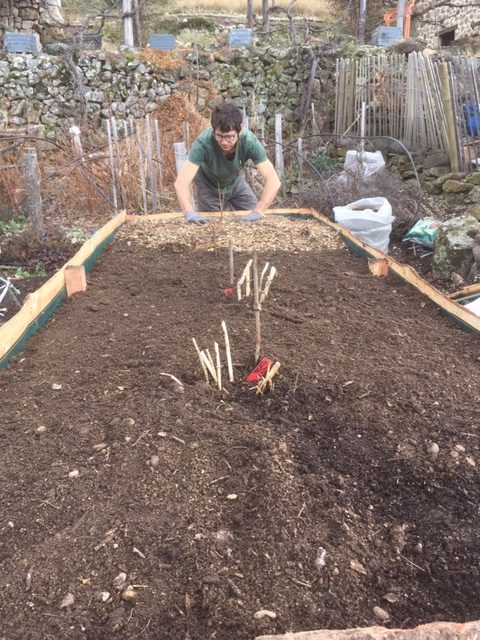
I can’t wait to build bed number two.

And then get the weed proof fabric and the gravel down in between and try and pretend that I don’t have four more beds to do after that.
Or bring up the fact that today is Brexit Day. 31st January. No man is an island, entire of itself. Every man is a piece of the continent, a part of the main. John Donne had it right. I can’t bear to stay up for the tolling of the bells. Nor do I have a flagpole to lower anything at half mast.
